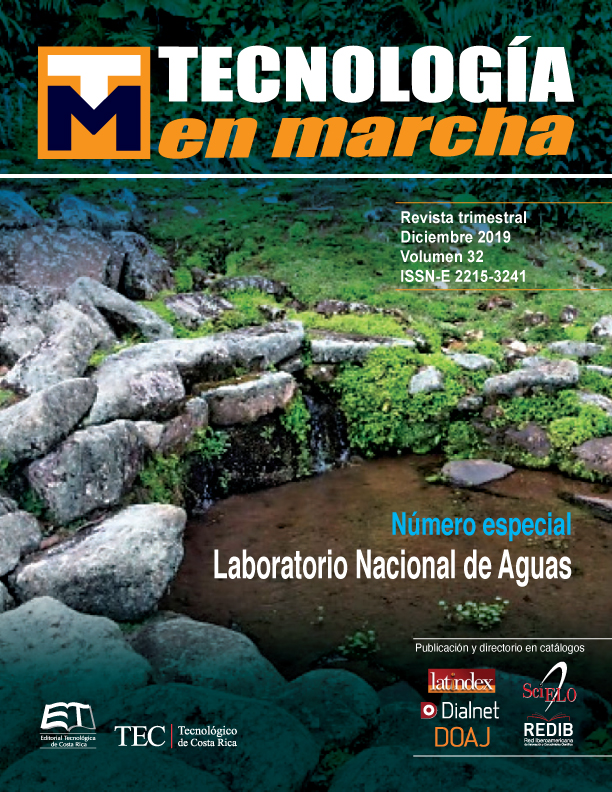Interpretation of Water Quality for Cases with Potential Saline Intrusion
Main Article Content
Abstract
The right water quality data interpretation must be considered, as a main part of the drinking water supply management, and it is also plays a key role in decision making. This situation usually applies when the dissolved solids profile in a specific water sample is completely different from typical behaviors in a specific geographical area. Therefore, the current study introduces a brief methodology that allows the establishment of preliminary water quality criteria, when water is affected by salt water intrusion, or even if it suffers the influence of a geological condition. According to calculations presented in this document, the most adequate indexes for the water quality evaluation are: historical conductivity and chloride trends, Simpson ration, calcium-magnesium ratio, sodium-chloride ratio, ion exchange ratios, and the behavior of the total dissolved solids. These calculations allow the differentiation between a saltwater intrusion condition and other rare situations, such as: hard water, high total dissolved solids concentration, dissolved metals, or even very basic or acidic waters. Even though some other tools might exist, the ones presented in this document can be used as a starting point, with a very robust and science – based background, in order to support the management of drinking water services whose quality faces changes without a clear explanation.
Article Details
Los autores conservan los derechos de autor y ceden a la revista el derecho de la primera publicación y pueda editarlo, reproducirlo, distribuirlo, exhibirlo y comunicarlo en el país y en el extranjero mediante medios impresos y electrónicos. Asimismo, asumen el compromiso sobre cualquier litigio o reclamación relacionada con derechos de propiedad intelectual, exonerando de responsabilidad a la Editorial Tecnológica de Costa Rica. Además, se establece que los autores pueden realizar otros acuerdos contractuales independientes y adicionales para la distribución no exclusiva de la versión del artículo publicado en esta revista (p. ej., incluirlo en un repositorio institucional o publicarlo en un libro) siempre que indiquen claramente que el trabajo se publicó por primera vez en esta revista.

